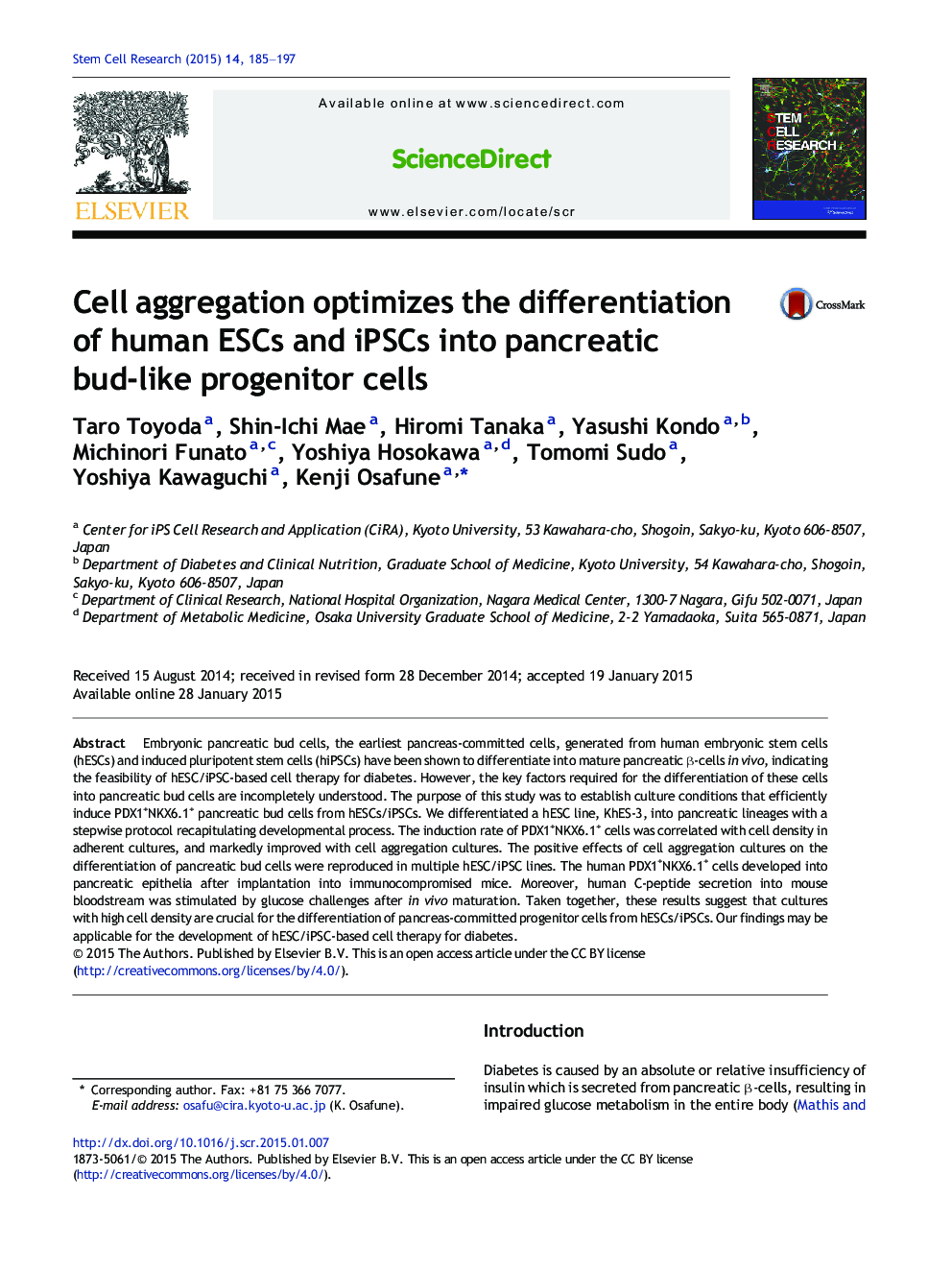| Article ID | Journal | Published Year | Pages | File Type |
|---|---|---|---|---|
| 2094055 | Stem Cell Research | 2015 | 13 Pages |
•A high cell density is a crucial factor in inducing NKX6.1+ pancreatic bud cells.•Aggregation cultures efficiently induce NKX6.1+ cells in multiple hiPSC lines.•The generated cells can differentiate into functional endocrine cells in vivo.•We propose that pancreatic bud formation is regulated by morphological factors.
Embryonic pancreatic bud cells, the earliest pancreas-committed cells, generated from human embryonic stem cells (hESCs) and induced pluripotent stem cells (hiPSCs) have been shown to differentiate into mature pancreatic β-cells in vivo, indicating the feasibility of hESC/iPSC-based cell therapy for diabetes. However, the key factors required for the differentiation of these cells into pancreatic bud cells are incompletely understood. The purpose of this study was to establish culture conditions that efficiently induce PDX1+NKX6.1+ pancreatic bud cells from hESCs/iPSCs. We differentiated a hESC line, KhES-3, into pancreatic lineages with a stepwise protocol recapitulating developmental process. The induction rate of PDX1+NKX6.1+ cells was correlated with cell density in adherent cultures, and markedly improved with cell aggregation cultures. The positive effects of cell aggregation cultures on the differentiation of pancreatic bud cells were reproduced in multiple hESC/iPSC lines. The human PDX1+NKX6.1+ cells developed into pancreatic epithelia after implantation into immunocompromised mice. Moreover, human C-peptide secretion into mouse bloodstream was stimulated by glucose challenges after in vivo maturation. Taken together, these results suggest that cultures with high cell density are crucial for the differentiation of pancreas-committed progenitor cells from hESCs/iPSCs. Our findings may be applicable for the development of hESC/iPSC-based cell therapy for diabetes.
